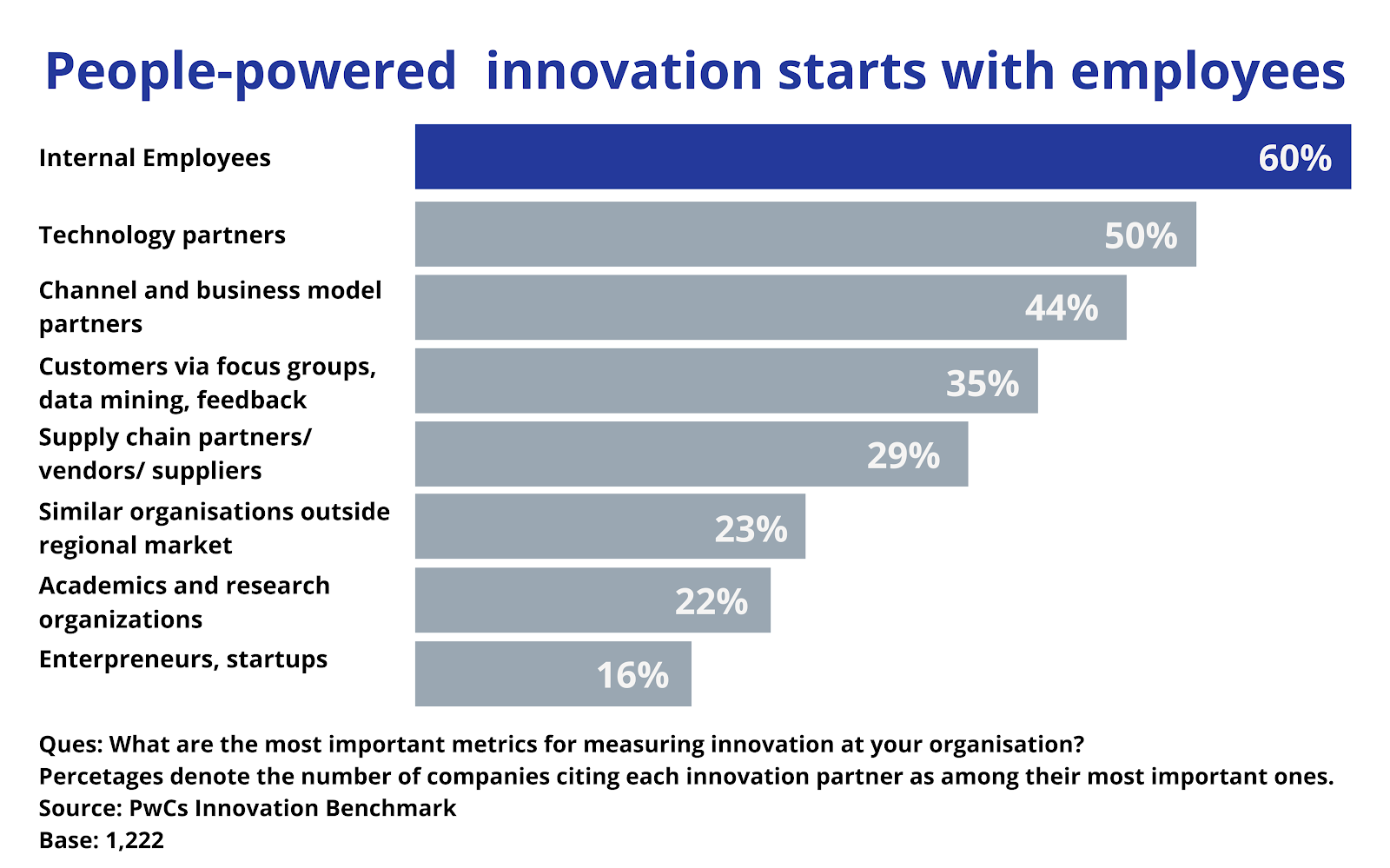Even in this digital era, many people are resistant to change, though thankfully they do not seek to emulate the 19th-century advancement-phobic Luddites. A modern organization has to accept that innovation is part of the rapidly evolving landscape in where you do business. Sadly, many people still accept the myths that have surrounded tech innovation for decades and that can slow your business’s growth.
Being aware of some of the most common myths surrounding digital innovation can help you avoid stagnation and embrace the new tech and other innovations that can help your business advance in your particular industry.
The 12 most common myths about innovation
1. Innovation has to be new
While, of course, some innovations are a huge new leap forward, often they can only be partial and incremental changes to existing systems or processes. Especially in the tech sector, organizations are constantly striving to add new features or to improve on existing ones. Good innovation does not have to be 100% new, just better than what went before.
A good example is CRM integration. The basic system may have been around for a while now, but we constantly see innovation in how the system can integrate with new and existing tools to enhance your customer support.
2. Innovation has to come from the top

It would be fair to say that, in some cases, C-suite and management are far removed from the everyday operations of a business. The reality is that innovative ideas can come from the bottom up; the production line worker sees a way to do a task more efficiently, for example. Encourage all levels of your workforce to communicate and contribute ideas.
3. Innovation cannot be forced
You may not be able to order your workforce to innovate, but you can create a company culture where innovative ideas are encouraged and rewarded. This can be especially true where new ideas can streamline staff’s workflows and make individual and collective tasks easier to complete.
4. Innovation is solo
Many have this mental image of inventors and innovators toiling away alone in a lab. The reality is that while an idea may in some cases originate with one person, the refinement of that idea to the point where it is a working product can involve input from many different people.
If you consider exploratory tests, then you will see a process that was developed as a solution to a problem and that has evolved over time with different organizations and people suggesting how to make it better.
5. Innovation is always positive
Innovation represents change and change can be both good and bad or even a combination of the two. Recognizing the benefits and the disadvantages of anything new-coming is integral to understanding the effects it will have on you or your business.
For example, remote working, while not new, has seen massive growth in the last two years. While it provides many benefits such as a better work-life balance for staff, it does come with some negatives such as the potential for increased isolation.
6. Innovation is not for all
Some people may argue that innovation is not for every business or person. Yet in many cases, if your organization does not involve some innovation, then you can be left behind your competitors. Innovation is not a catch-all phrase. Some innovations may not suit your company while others are necessary to sustain your business.
For example, the mobile apps for business market is a huge and constantly growing market. If those apps help you do business better, ignoring them could leave you trailing the competition. It could also be a key to business communication.
7. Innovation is pointless
Thinking that innovation does not fit with your company culture or how you operate is both outdated and blinkered. You can see that the tech used in business every day is constantly evolving such as enterprise software pricing models. Embracing the innovations that improve how you work is essential, especially in areas such as digital communications.
8. Innovation is too difficult in larger organizations

There’s little truth in this, though it would be more accurate to say “more difficult” than “too difficult”. Larger organizations may be slower to embrace innovation due to the complexity of the decision-making process and a slower process of ideas becoming action. Sometimes, as was the case with the pandemic, innovation has to be pushed in order to facilitate agile change.
9. Innovation costs too much
Innovation does not always mean major investment or significant costs. In fact, in many cases, innovation is going to save you money in the long term even if there is some initial investment needed. With so much development in UCaaS (unified communications as a service), even a smaller organization can consider introducing the best voip phone systems for small business to improve communications.
10. Innovation should come from customers
Although nearly every business now strives to be customer-centric and to provide the best customer experience possible, that does not mean their ideas and solutions are the right ones for your business. What may seem a good solution to Customer A may not work for Customer B. Part of your responsibility is to provide solutions for your customers, not vice versa.
Even in this digital era, many people are resistant to change, though thankfully they do not seek to emulate the 19th-century advancement-phobic Luddites. A modern organization has to accept that innovation is part of the rapidly evolving landscape in where you do business. Sadly, many people still accept the myths that have surrounded tech innovation for decades and that can slow your business’s growth.
Being aware of some of the most common myths surrounding digital innovation can help you avoid stagnation and embrace the new tech and other innovations that can help your business advance in your particular industry.
The takeaway

Innovation is not a word or process to be scared of. While in some cases, innovation can indeed be the source of major changes or disruption to your current working model, even those major changes should produce long-term benefits.
When somebody suggests something innovative for your business, you should look at all the potential outcomes, both short and long-term. Those outcomes can include everything from savings in costs to better customer experiences. It is rare for any innovation to be purely disadvantageous to your company.
While there is no Innovation 101 that will turn all your staff into innovative geniuses, you can teach and encourage your staff to look at tasks with a logical mind and to think about ways to overcome any problems they encounter. You can also encourage them to come forward with ideas they have. You may not get 1000 great ideas but even one could make a real difference.

Author Bio
Grace Lau is the Director of Growth Content at Dialpad, an AI-powered cloud communication platform and one of the best phone systems for small businesses for better and easier team collaboration. She has over 10 years of experience in content writing and strategy. Currently, she is responsible for leading branded and editorial content strategies, partnering with SEO and Ops teams to build and nurture content. Here is her LinkedIn.

